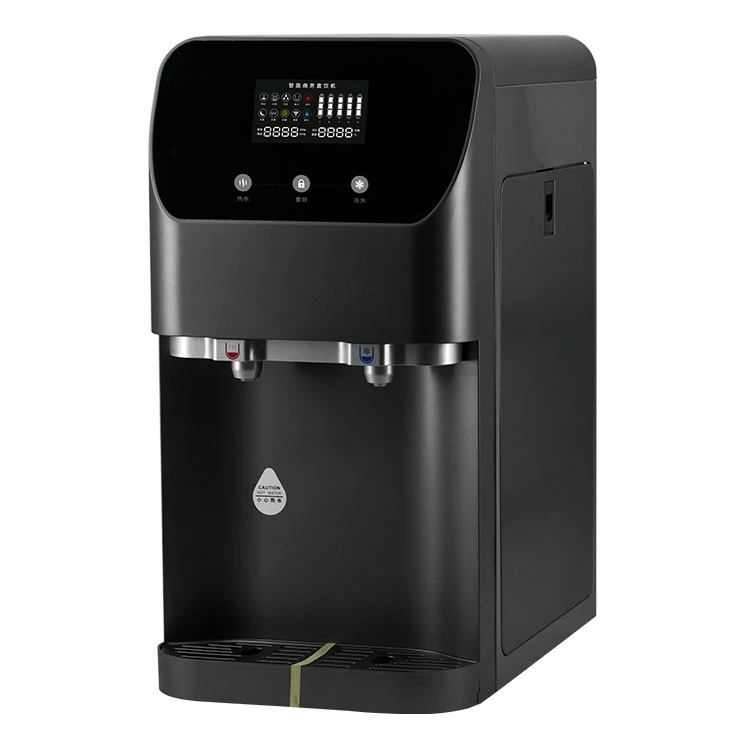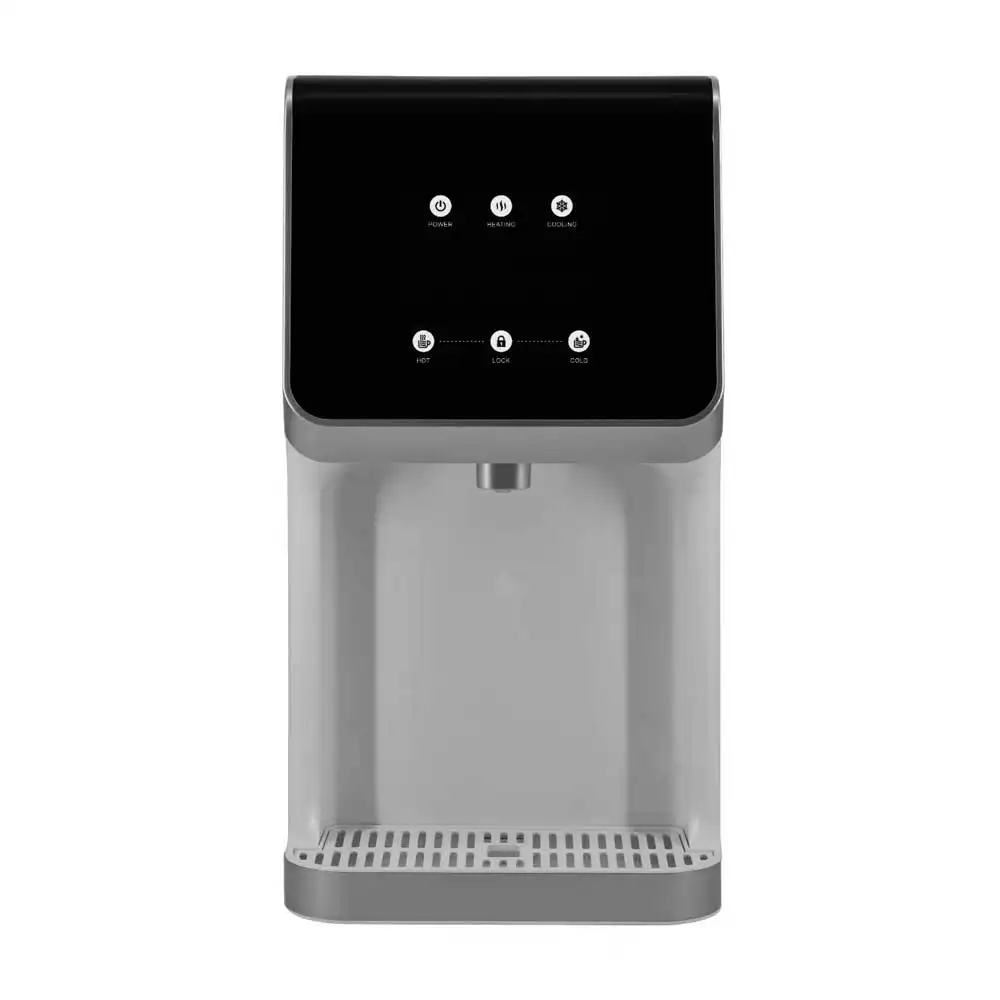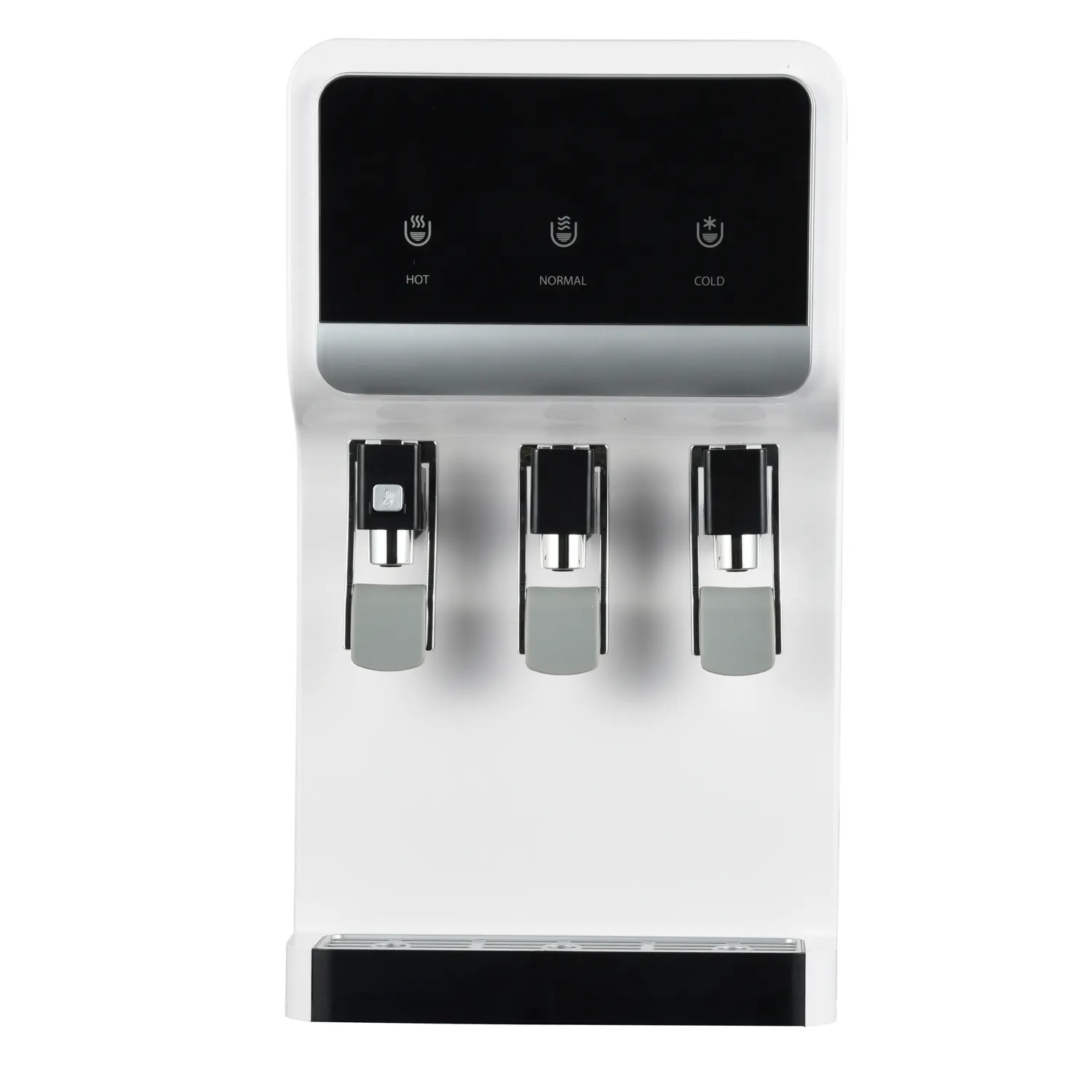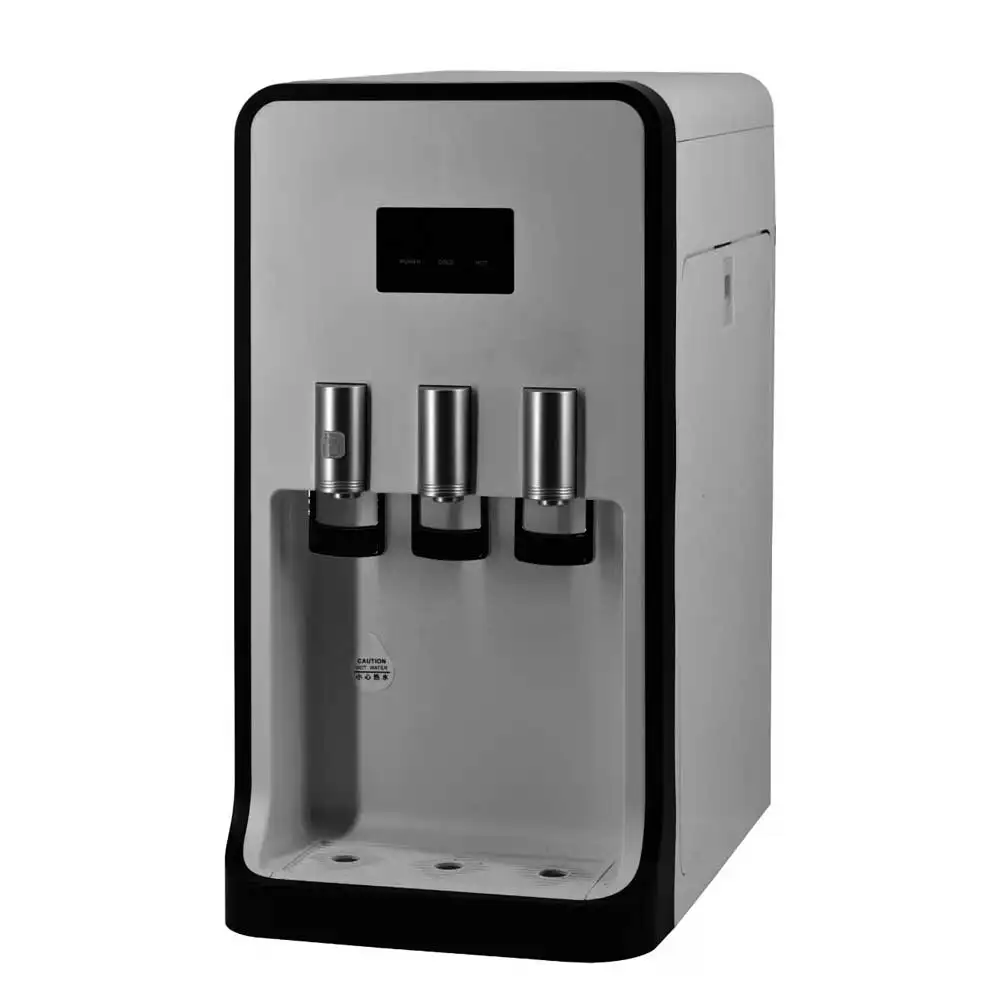The Best 6 Countertop Water Dispenser of 2025, Test and Reviewed
If you're looking for a convenient way to purify your drinking water at home, we suggest the Brita Elite Filter, paired with the 10-cup Brita Standard Everyday Pitcher or the 27-cup Brita Ultramax Water Dispenser for households with high water consumption. However, after nearly ten years of researching home water filtration, we highly recommend under-sink or faucet-mount filters as they offer better performance. They have a longer lifespan, provide faster access to clean water, can remove a wider range of impurities, are less likely to clog, and are quick and easy to install.
Most home water filters are unable to remove bacteria and other waterborne pathogens, making them ineffective in protecting against illnesses that may occur during boil-water notices after natural disasters like floods, hurricanes, and wildfires. For safe drinking water in emergency situations, we recommend a portable filter for bug-out bags and high-capacity filters specifically designed for disaster preparedness. Our main emergency preparedness guide also includes information on safe water storage equipment.
1: Table Top 2 Taps Reverse Osmosis Hot And Cold Water Dispenser
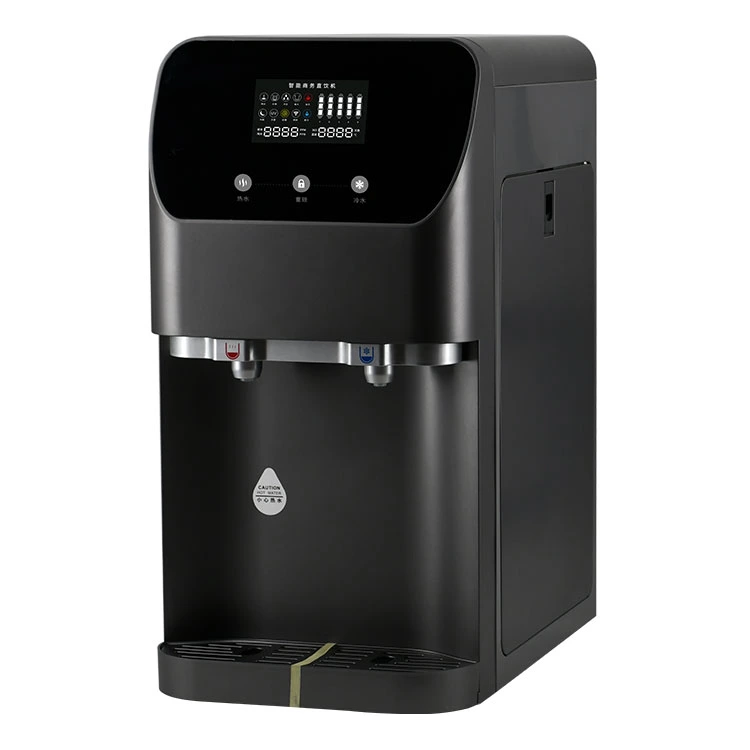
Advanced Osmosis Water Purification Technology: The table top water dispenser utilizes osmosis technology to ensure clean and safe drinking water, providing users with peace of mind, particularly for those who prioritize health and wellness, such as fitness enthusiasts and health-conscious individuals.
Instant Hot and Cold Water Dispenser: This table top water dispenser system provides both hot and cold water instantly, making it a convenient addition to any home or office setting, especially for users who need hot water for tea, coffee, or instant soups.
Durable and Versatile Design: Made from high-quality plastic, this table top water dispenser is designed for long-lasting use, suitable for both household and hotel applications, and can be easily installed on a desktop, making it a great option for users who value convenience and flexibility.
2: Brita Ultramax Dispenser

Brita's flagship pitcher sets the standard for the filter-pitcher market, offering simple operation and maintenance compared to their various other models.
The Brita Ultramax Dispenser has a capacity of approximately 27 cups of water, with 18 cups held in the filter tank and an additional nine or 10 cups in reserve in the upper fill reservoir. Its compact design optimizes fridge space and the spigot automatically closes after pouring, minimizing the risk of spills. It is a convenient and reliable solution for easy access to chilled, filtered water.
3: Brita Elite Filter

This particular model boasts an impressive number of 30 ANSI/NSF certifications, which is the highest among filters of its type. It is designed to last for six months before needing to be replaced, but like any other filter, it may become clogged over time.
The best filter offered by Brita is their Elite Filter. It has been certified by ANSI/NSF to remove a higher number of contaminants compared to other gravity-fed filters we have tested. These contaminants include lead, mercury, cadmium, PFOA and PFOS, as well as various industrial compounds and "emerging contaminants" commonly found in tap water. It is also rated to last for 120 gallons or six months, which is three times longer than most other filters. This makes the Elite Filter a more cost-effective option in the long run, especially when compared to more common two-month filters. Keep in mind, however, that sediment in your tap water may clog the filter before the full six months. For those interested in improving the taste of their tap water, the Brita Standard Pitcher and Dispenser Filter may be a more affordable option that is less prone to clogging, but it is not certified to remove lead or industrial compounds.
We like it for a few other reasons, too:
According to the manufacturer, the Elite pitcher filter has a longer replacement schedule of 120 gallons or six months, compared to the standard 40 gallons or two months. Reduce the amount of trash you generate and save money on refills by using just two Elite filters a year, instead of six. This will result in a 50% decrease in spending, making it a more environmentally and economically conscious choice.
It is certified to remove many additional common pollutants. Some common water contaminants are chlorine (used to eliminate bacteria and other harmful organisms from water sources but can result in a displeasing taste), carbon tetrachloride, a volatile organic compound known for its toxic effects on the liver, and several emerging substances such as bisphenol A (BPA), DEET (a popular insect repellent), and estrone, a synthetic form of the hormone estrogen often found in water supplies.
But there’s a caveat. Despite its high filtration speed and large capacity of 120 gallons, the Elite pitcher-type filter may have a tendency to clog. This can result in slower filtration or a complete stop, requiring more frequent replacements. According to numerous owners, this is a common issue and our testing also revealed a decrease in speed. It is important to note that if you have sediment in your tap water, typically caused by rusty pipes, you may encounter the same problem.
Installing Brita’s filters is pretty easy to mess up. The filter appears to fit securely into place, but it may require an extra push to fully secure it. If the push is not given, unfiltered water may leak around the sides of the filter when the upper reservoir is filled, resulting in water that is not truly filtered. Some of the filters we tested in 2023 also needed to be positioned so that the long slot on one side of the filter lined up with a corresponding tab on certain Brita pitchers. (However, other pitchers like our top-rated 10-cup Standard Everyday do not have this tab and allow for the filter to be positioned in any direction.)
It works quickly for a pitcher filter. The Elite filter can process a complete refill in five to seven minutes according to our testing. Other filters with similar specifications took longer to complete the same task, with processing times often taking 10 minutes or more.
And you may not need all of the Elite’s protections. If you are aware of having good-quality tap water, a basic Brita Standard Pitcher and Dispenser Filter would be our recommended choice instead. It has five ANSI/NSF certifications (PDF), including chlorine (but not lead, organic compounds, or emerging contaminants), making it less certified than the Elite. However, it is a cost-effective and less likely to clog filter that can enhance the taste of your water.
4: Cyclopure Purefast filter cartridge for PFAS
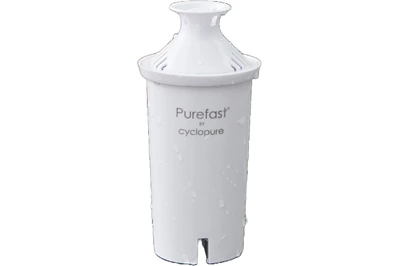
This filter's Dexsorb material effectively captures various forever chemicals (PFAS), such as PFOA and PFOS, in line with NSF/ANSI standards.
Cyclopure's Purefast filter utilizes Dexsorb, the same material used by certain treatment plants, to effectively remove persistent chemicals, also known as PFAS, from public water supplies. It is compatible with both Brita pitchers and dispensers, which we highly recommend. With a filtration capacity of 65 gallons, it performed well in our tests and did not experience significant slowing over time. However, like all gravity-fed filters, it may become congested if your water contains a high amount of sediment. Additionally, the filter includes a prepaid envelope for easy return to Cyclopure. The company will properly dispose of any captured PFAS to prevent their release back into the environment. While Brita does not endorse third-party filters, the Purefast filter and Dexsorb material are both NSF/ANSI-certified for reducing PFAS, providing us with confidence in recommending it. It should be noted that this filter only removes PFAS and chlorine, so if you have concerns about other
The Purefast filter perfectly fits and creates a tight seal in Brita's pitchers and dispensers, ensuring that unfiltered water does not leak around its edges. This filter has been rigorously tested by NSF and meets the certification standards for chlorine, PFOA, and PFOS. Additionally, the Dexsorb filter media is NSF/ANSI-certified and is already being used in municipal water-treatment plants to address PFAS. For those looking to specifically remove PFAS and chlorine from their tap water, the Purefast filter is a reliable choice.
During our evaluations, the Purefast cartridge demonstrated similar filtering speed to the standard Brita filter (the well-known white one), taking approximately six to seven minutes to purify the water in the upper pitcher reservoir, and approximately 12 minutes to purify the water in the dispenser's larger reservoir. This consistent pace was maintained throughout its 65-gallon lifespan; per Cyclopure's instructions, we periodically reconditioned the filter by running tapwater directly through it, approximately once a month or every 20 gallons. Once the filter reaches the end of its functional life, customers can return it using the pre-paid envelope provided by Cyclopure; the filter will be processed to permanently eliminate the PFAS it has captured, effectively preventing any contamination from being released into the environment.
According to a representative from Brita, there are currently no Brita-approved third-party filters available. However, we can assure you that the Purefast cartridge is a safe and effective option. The NSF/ANSI certification process is highly rigorous and includes testing filter and pitcher combinations that have been publicly available for at least one year. This ensures that only quality and reliable products are sold, but it also presents a significant hurdle for new, innovative products to enter the market.
5: Brita Standard Everyday Pitcher

The Brita pitcher sets the standard for filter pitchers with its timeless, low-maintenance design. Compared to other Brita models, this iconic design is both simpler to use and to keep clean.
The 10-cup Brita Standard Everyday Pitcher stands out as the top choice among Brita's many pitchers. With its smooth, seamless design, it is much easier to clean than other models. The one-handed thumb-flip cap also simplifies the process of refilling. Plus, the ergonomic and curved C-shaped handle offers superior comfort compared to the typical angular, D-shaped handles found on most Brita pitchers.
This Amazon exclusive, The Standard Everyday, is similar to Walmart, Target, and other retailer's Tahoe Water Pitcher. The only notable difference between the two is the unique D-shaped handle on the Tahoe, which we found slightly more difficult to grip.
The Elite filter is certified for use in pitchers or dispensers that have a Performance Indication Device (PID) to directly measure the volume of water passing through the filter. This rigorous ANSI/NSF certification ensures that the filters remain effective even after cleaning 120% of their rated capacity of highly contaminated test solutions. In comparison, filters tested on non-PID pitchers and dispensers have to clean 200% of their rated capacity. With such stringent testing, the filter can handle even the most heavily contaminated tap water.
Additionally, any Brita pitcher or dispenser that includes the Brita Pitcher and Dispenser Filter is compatible with the Elite filter, and vice versa. However, Brita's Stream pitchers are not compatible with either filter.
The Everyday pitcher is advertised as a 10-cup model, but it actually has a capacity of 11.5 cups, making it ideal for a small household's daily water needs. When full, it weighs just over 7 pounds, which may put strain on the wrist. In comparison, the smaller 6-cup Brita Space Saver Water Pitcher weighs only 4.5 pounds when full, but it comes with a standard Brita Pitcher and Dispenser Filter. Keep in mind that Elite filters need to be purchased separately.
6: LifeStraw Home Dispenser
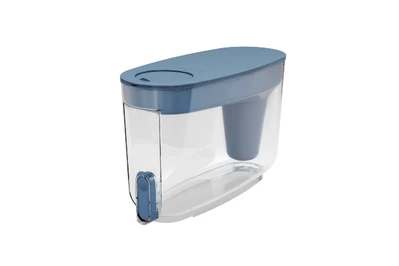
The LifeStraw Home Dispenser has undergone thorough testing to effectively eliminate numerous contaminants, including lead. Its filter is highly resistant to clogging compared to others we've tested.
For those struggling with clogged water filters or looking for a solution to sedment-rich tap water, the LifeStraw Home Dispenser effectively filters 2.5 gallons of heavily rust-contaminated water. It maintains its filtering capabilities throughout the process, without any sign of slowing down. With four ANSI/NSF certifications and independent testing, this is our top choice for addressing issues with chlorine, taste, odor, lead, and mercury in tap water.
The LifeStraw filter has been thoroughly tested and certified by ANSI/NSF for chlorine, lead, and mercury. It has also been rigorously tested to meet a variety of other ANSI/NSF standards by both IAPMO US and India, two organizations accredited by ANSI and the Water Quality Association. These include Standard 401 for emerging contaminants, as well as cadmium, chromium (III), copper, glyphosate, asbestos, and bacteria and parasites, all of which are not found in our other top picks. LifeStraw also meets the standards set by the WHO and EPA, making it a reliable choice. Further instilling trust in its claims, LifeStraw openly shares its test results in a publicly available PDF.
In order to determine the effectiveness of the LifeStraw in removing sediment, Tim conducted an experiment where he used hydrogen peroxide to convert a piece of #0000 steel wool into small rust particles. He then mixed half-teaspoons of the rust into 2 cups of tap water at a time and filtered it through the LifeStraw. After 40 cups, all of the rust solution was used up but the filter was still operational, although at a slightly slower rate. Tim even tasted a glass of the filtered water, which had a refreshing, spring water-like taste.
The LifeStraw filter is composed of two filter elements: a hollow fiber membrane and an activated carbon-plus-ion exchange filter. The membrane has a dense network of thin polymer tubes with 0.2-micron pores that effectively filter out bacteria, parasites, and most sediment. The activated carbon-plus-ion exchange filter then captures organic compounds, metals, and other dissolved contaminants. The carbon filter has a lifespan of 40 gallons or two months, while the membrane filter can last up to 264 gallons or one year. Replacement filters can be purchased individually or subscribed to on a schedule.
Who this is for
This guide is intended for those seeking a pitcher-style water filter - the type that can easily be filled from the faucet and stored in the refrigerator.
Pitcher-type filters are convenient and simple to use, simply by filling them with tap water and allowing the filter to do its job. They are also affordable to purchase, with replacement filters costing less than $15 and typically needing to be replaced every two months.
These filters have some disadvantages. They are not as effective against a wide range of contaminants compared to under-sink or faucet-mounted filters, as they use gravity instead of water pressure and have a less-dense filter.
The slow filtration process of pitcher filters due to their reliance on gravity means that it can take anywhere from five to 15 minutes for a single refill of the upper reservoir to pass through the filter. In most cases, more than one refill is needed to produce a full pitcher of clean water.
The pitcher filters may often become clogged due to sediment and air bubbles in the tap water, particularly when faucet aerators are involved.
It is recommended to install an under-sink or faucet-mounted filter when possible.
Why you should trust us
As a product testing expert for Wirecutter for the past four years, I have extensively researched water filters. This involved in-depth discussions with the leading US filter-certification bodies, the NSF and the Water Quality Association, to gain insight into their testing methods. I have also conducted interviews with numerous water filter manufacturers to scrutinize their claims. Additionally, I have personally used and evaluated various filters and pitchers over the course of several years to determine their durability, ease of maintenance, and user-friendliness, as these factors greatly impact daily usage.
Guided by the expertise of John Holecek, a previous NOAA scientist, this guide has been meticulously researched and written. It has undergone rigorous testing by both John and independent sources to ensure its accuracy and reliability.
Do you need a water filter?
Unfortunately, there’s no universal answer.
Under the Safe Drinking Water Act, the EPA regulates public water supplies in the United States and requires strict quality standards to be met for water leaving treatment plants. While many contaminants are regulated, some may still pose a threat.
Additionally, pollutants may enter into the water supply after it has left the treatment facility due to the infiltration of faulty pipes or, in the case of lead, the leaching of the pipes themselves. The treatment processes applied (or neglected) at the facility can also worsen the issue of pipe leaching downstream, as demonstrated in the situation in Flint, Michigan.
You can typically access your local supplier's EPA-mandated Consumer Confidence Report (CCR) online to learn about the contents of their water when it leaves the plant. If not available, all public water suppliers are obligated to provide their CCR upon request.
In order to determine the exact contents of your home's water, it is important to have it tested due to the possibility of contamination. This can be done through local water-quality labs or with the use of home test kits. Our guide evaluated 11 different test kits and found the SimpleLab Tap Score to be a standout choice. It provides a user-friendly experience and presents a thorough, well-written report on any potential contaminants found in your tap water.
How we picked: Pitchers and dispensers
We initiated our quest for pitchers within the commonly sought-after 10- to 11-cup range, as well as larger-volume dispensers designed for households that consume a high volume of water. (Many companies also offer smaller pitchers for those who prefer a compact model.)
We evaluated various design elements, such as handle style and comfort, the ease of filter installation and replacement, the fridge space taken up by the pitchers and dispensers, and the volume ratio of the upper fill tank to the lower "filtered" tank. A higher ratio is advantageous as it provides more filtered water with each trip to the faucet.
How we tested
In 2016, we performed tests on various filters to compare our findings with ANSI/NSF certifications and manufacturer claims. Our laboratory conducted a measurement of each filter's ability to remove chlorine. We also utilized an independent test for lead removal on our top two choices, using a solution with higher levels of lead than required by NSF's certification protocol.
Based on our testing, we have found ANSI/NSF certification or its equivalent to be a trustworthy indicator of a filter's effectiveness. This is not unexpected, given the strict standards of the certification process. As a result, we consistently use ANSI/NSF certifications or their equivalent to evaluate the capabilities of different filters.
Our further examinations have centered on real-life functionality and the practical characteristics and limitations that are only revealed after an extended period of use.
How we picked: Filters
As a product or industry expert, we adhere to strict guidelines for recommending reliable filters. Our selections must meet the ANSI/NSF certification, which sets rigorous quality standards and testing procedures for various products, including water filters. This certification is established by private, nonprofit organizations such as the American National Standards Institute (ANSI) and NSF, who collaborate with the EPA, manufacturers, and industry experts.
The filters must surpass their expected lifespan and undergo rigorous testing with heavily contaminated "challenge" samples in order to meet certification standards.
Both the NSF and the Water Quality Association (WQA) are the main certification labs for water filters. They are both accredited by ANSI and the Standards Council of Canada in North America for ANSI/NSF certification testing.
After much internal discussion, we have expanded our acceptance to include "tested to ANSI/NSF standards" language, as long as certain requirements are met. These include having the testing conducted by an independent laboratory accredited by organizations such as ANSI, making the results and methods public, and having a proven track record of producing safe, trustworthy, and accurately described filters.
When selecting a filter, we focused specifically on those with certification or the equivalent under the ANSI/NSF standards 42 and 53, which address chlorine and other aesthetic contaminants, as well as heavy metals and organic compounds. Additionally, we considered the newer ANSI/NSF standard 401, which covers emerging contaminants like pharmaceuticals commonly found in US water.
Beyond all that, we looked for:
1: Total ANSI/NSF certifications: The importance of thorough water filtration cannot be overstated, as there are numerous potential contaminants that must be rigorously tested and certified before a filter can be deemed effective.
2: Lead, microplastics, and PFAS certifications: Consider choosing certified filters that specifically target these concerning contaminants, as many individuals have expressed concern about their presence.
3: Cost competitiveness: The replacement of pitcher filters is necessary on a regular basis, making it important to consider the cost per filter and replacement schedule for long-term running expenses.
4: Wide availability: The recommended replacement filters should always be easily accessible in the future.
The competition
Multiple pitchers and dispensers from the included brands have been thoroughly tested, with a primary focus on the most essential aspect of a filtration system: the filter itself.
In 2023, Pur replaced their previous top filter pick, the Plus Lead Reducing Filter (model PPF951K), with the Pur Plus (model CRF950Z), which does not have ANSI/NSF certification for lead reduction and also lacks PFAS certification. While we appreciate the design of Pur's pitchers and dispenser as the best among those we've tested, the deficiencies in their filters have led us to withdraw our recommendation for the company's pitcher-filtration systems.
The Brita Stream Filter effectively eliminates chlorine taste and odor, but does not have certification for removing organic compounds or heavy metals according to ANSI/NSF Standard 53. It is only compatible with Brita's Stream pitchers and cannot be used with their Everyday or other models.
Clear2O's CWF50X and GRF20X filters do not have ANSI/NSF certification. Instead, they have been independently tested and proven to meet water industry standards for reducing Chlorine, Heavy Metals, Cysts, VOC, and other contaminants. However, the testing laboratory and specific results have not been disclosed by the company.
The Brita-compatible Amazon Basics 10-Cup Water Filter and Pitcher is priced lower than the Amazon-exclusive Brita Everyday, our top pick. While it does not have a convenient one-handed flip-top opening like the Brita Everyday, its one-piece lid must be removed and replaced every time the pitcher is refilled. In our opinion, the additional cost of $10 is worthwhile to avoid this daily annoyance.
The Soma Filter is officially recognized for meeting the ANSI/NSF Standard 42 for taste and ANSI/NSF 53 for copper, cadmium, and mercury, just like the Brita Standard Pitcher and Dispenser Filter. However, the Soma is priced at more than double the cost of the Brita option. While the Brita Elite filter and both Pur filters have additional certifications under 42 and 53, they also have 401 certifications that the Soma does not possess.
According to the merchant, the ZeroWater pitcher filter is certified by ANSI/NSF for an array of contaminants under both standards 42 and 53, including lead. However, it has a limited capacity of only 20 gallons. This may seem even worse when taking into account the cost of the filter - approximately $16 each, or a total of nearly $200 for a full year's worth. The most notable claim from ZeroWater is that their filters eliminate 100% of "total dissolved solids" in water, which primarily consist of minerals. In our own testing carried out in 2016, this claim was proven to be true. However, there may be some negative consequences to completely removing these minerals. The World Health Organization reports that higher levels of TDS in drinking water may lower the risk of cancer and heart disease. Furthermore, according to the WHO, water with very low TDS levels may also not be desirable due to its bland and unsatisfying taste.
According to our research, some countertop dispensers, such as the Big Berkey, have been found to emit room temperature water while occupying significant counter space. These types of dispensers can also be susceptible to algal and microbial growth, resulting in unpleasant odors. It is worth noting that not all of these dispensers have been ANSI/NSF-certified, as our review of the "The Big Berkey Water System" revealed. Interestingly, similar products like the Propur Big, Alexapure Pro, and Zen Water (available in 4, 6, or 8 gallon options) make similar claims and share the same price point, but also lack certifications.

